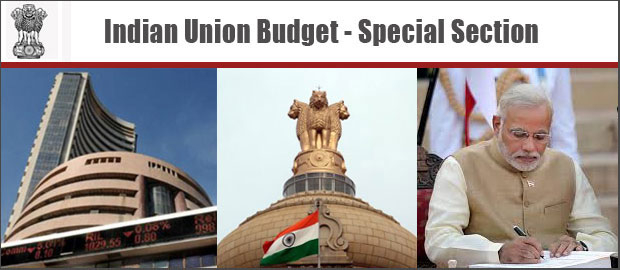

Economic Survey 2014-15 Highlights
Economic Outlook, Prospects and Policy Challenges
· Macroeconomic fundamentals in 2014-15 have dramatically improved. Highlights are:
· Inflation has declined by over 6 percentage points since late 2013.
· The current account deficit has declined from a peak of 6.7 percent of GDP (in Q3, 2012-13) to an estimated 1.0 percent in the coming fiscal year.
· Foreign portfolio flows have stabilized the rupee, exerting downward pressure on long-term interest rates, reflected in yields on 10-year government securities, and contributed to the surge in equity prices.
· In response to the favourable terms of trade shock (especially with regard to oil), macroeconomic policy has appropriately balanced government savings (two-thirds) and private consumption (one-third).
· After a nearly 12-quarter phase of deceleration, real GDP has been growing at 7.2 percent on average since 2013-14, based on the new growth estimates of the Central Statistics Office. Notwithstanding the new estimates, the balance of evidence suggests that India is a recovering, but not yet a surging, economy.
· From a cross-country perspective, a Rational Investor Ratings Index (RIRI) which combines indicators of macro-stability with growth, illustrates that India ranks amongst the most attractive investment destinations. It ranks well above the mean for its investment grade category (BBB), and also above the mean for the investment category above it (on the basis of the new growth estimates).
· Several reforms have been undertaken and more are on the anvil. The introduction of the GST and expanding direct benefit transfers can be game-changers.
· Structural shifts in the inflationary process are underway due to lower oil prices, deceleration in agriculture prices and wages, and dramatically improved household inflation expectations. Going forward inflation is likely to remain in the 5-5.5 percent range, creating space for easing of monetary conditions.
· In the short run, growth will receive a boost from the cumulative impact of reforms, lower oil prices, likely monetary policy easing facilitated by lower inflation and improved inflationary expectations, and forecasts of a normal monsoon in 2015-16. Using the new estimate for 2014-15 as the base, GDP growth at constant market prices is expected to accelerate to between 8.1 and 8.5 percent in 2015-16.
· Medium-term prospects will be conditioned by the “balance sheet syndrome with Indian characteristics” that has the potential to hold back rapid increases in private sector investment. Private investment must be the engine of long-run growth. However,there is a case for reviving targeted public investment as an engine of growth in the short run to complement and crowd-in private investment.
· India can balance the short-term imperative of boosting public investment to revitalize growth with the need to maintain fiscal discipline. Expenditure control, and expenditure switchingfrom consumption to investment,will be key.
· The outlook is favourable for the current account deficit and its financing. A likely surfeit, rather than scarcity, of foreign capital will complicate exchange rate management. Reconciling the benefits of these flows with their impact on exports and the current account remains an important challenge going forward.
· India faces an export challenge, reflected in the fact that the share of manufacturing and services exports in GDP has stagnated in the last five years. The external trading environment is less benign in two ways: partner country growth and their absorption of Indian exports has slowed, and mega-regional trade agreements being negotiated by the major trading nations in Asia and Europe threaten to exclude India and place its exports at a competitive disadvantage.
· India is increasingly young, middle-class, and aspirational but remains stubbornly male. Several indicators suggest that gender inequality is persistent and high. In the short run, the renewed emphasis on family planning targets,backed by misaligned incentives, is undermining the health and reproductive autonomy of women.
The Fourteenth Finance Commission
· The FFC marks a watershed in the history of Indian federalism. Unprecedented increases in tax devolution will confer more fiscal autonomy on the states. This will be enhanced by the FFC-induced imperative of having to reduce the scale of other central transfers to the states. In other words, states will now have greater autonomy both on the revenue and expenditure fronts.
· All states stand to gain from extra resources although there will be some variation between the states.
· FFC transfers are highly progressive; that is, states with lower per capita NSDP receive on average much larger transfers per capita. In contrast, plan transfers were much less progressive.
· The concern that more transfers will undermine fiscal discipline is not warranted because states as a whole have been more prudent than the centre in recent years.
>>.... GO TO NEXT PAGE
Indian Union Budget 2015-16.... Read here
Indian Railway Budget 2015-16 ... Read here
BUDGET RELATED SECTIONS -
Budget Main
Budget Basics
Budget Glossary
Economic Survey
Budget Updates
PREVIOUS BUDGETS
Indian Union Budget 2014-15 .... Click here
Indian Union Budget 2013-14 .... Click here
Indian Union Budget 2012-13 .... Click here
Indian Union Budget 2011-12 .... Click here
Indian Union Budget 2010-11 .... Click here
Indian Union Budget 2009-10 .... Click here
Indian Union Budget 2008-09 .... Click here
Indian Union Budget 2007-08 .... Click here
Indian Union Budget 2006-07 .... Click here
Indian Union Budget 2005-06 .... Click here
Indian Union Budget 2004-05 .... Click here

BANKING

FINANCE

INSURANCE

TECHNOLOGY

Foreign Exchange


